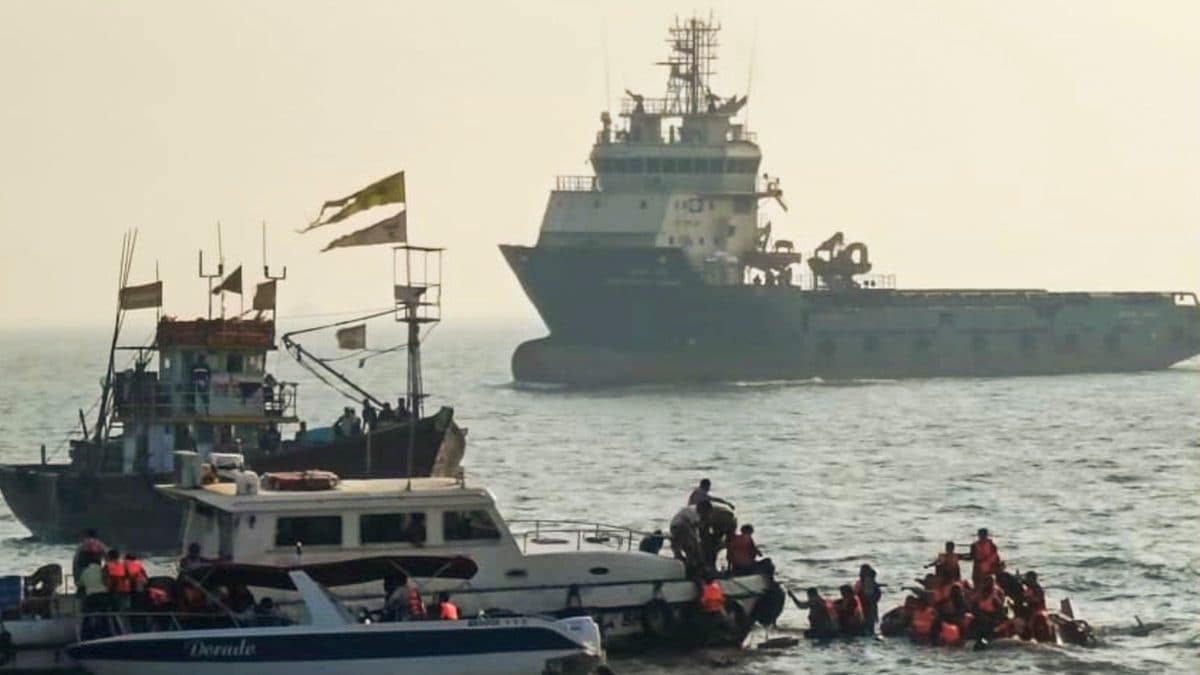 |
|
The tragic collision between an Indian Navy speedboat and a tourist ferry off the Mumbai coast on Wednesday resulted in the deaths of 14 individuals and left numerous others injured. A survivor's account paints a starkly different picture from the Navy's initial claim of engine failure. Gautam Gupta, a vegetable vendor who was on the ferry with his aunt and relatives, directly contradicts the official narrative, alleging that the speedboat driver engaged in reckless and dangerous maneuvers that ultimately led to the fatal accident. Gupta describes the driver as being in a “playful mood,” deliberately zig-zagging the boat through the water, and performing what he perceived as a stunt for the amusement of those onboard the speedboat and nearby onlookers. This behavior, according to Gupta, culminated in the speedboat making a sharp turn directly towards the ferry, resulting in the devastating collision.
The severity of the incident is further underscored by Gupta's statement that several passengers, including himself, were filming the speedboat's actions prior to the crash. The fact that people felt compelled to document what they felt to be a showboating display underlines the apparent nonchalance and disregard for safety displayed by the speedboat's operator. Gupta’s account vividly portrays the moment of impact, noting that one occupant from the speedboat was even thrown onto the ferry. The initial belief that the ferry was unharmed quickly evaporated as the vessel began to sink, leading to widespread panic and the ensuing loss of life. His account highlights the unexpected nature of the tragedy, highlighting the devastating consequences of actions seemingly intended as a playful display.
Gupta directly refutes the official explanation of engine failure by pointing to the speedboat's maneuverability and the calm demeanor of the speedboat's occupants before the collision. He argues that if a genuine engine malfunction had occurred, the boat would not have been capable of the agile movements and controlled turns that preceded the crash. His statement suggests a deliberate act of negligence or reckless disregard for the safety of other vessels, which directly contradicts the Navy’s claim of technical fault as the sole cause. The discrepancy between Gupta's account and the official narrative raises serious questions about the investigation's transparency and raises concerns about potential accountability for those responsible for the tragedy.
The accident raises significant questions about safety protocols and oversight regarding naval vessels. The fact that a naval speedboat, seemingly engaged in operational trials, would operate in such close proximity to civilian passenger vessels is deeply troubling. The survivor's account necessitates a thorough and impartial investigation to determine the exact sequence of events and to assign responsibility accordingly. The incident highlights the need for increased safety measures and stricter enforcement of navigational rules to prevent similar tragedies from occurring in the future. A comprehensive investigation must not only address the immediate causes but also look into the underlying systemic issues that may have contributed to the accident.
The emotional toll on those affected extends beyond the immediate loss of life. Gupta's personal narrative poignantly illustrates the devastating impact on families and loved ones. His decision to take his aunt on a seemingly innocent ferry ride became a tragic last memory. The sheer number of casualties, the rapid sinking of the ferry, and the ensuing chaos created a deeply traumatic experience for survivors and witnesses. Beyond the legal and procedural aspects of the investigation, acknowledging and addressing the emotional wounds inflicted on individuals and communities is crucial for healing and preventing similar events. The community requires support and empathy as they process the trauma resulting from this preventable tragedy.
Source: 'Navy Boat's Driver Zig-Zagged Through Waters, Stunts Led To Tragedy': Mumbai Ferry Survivor
